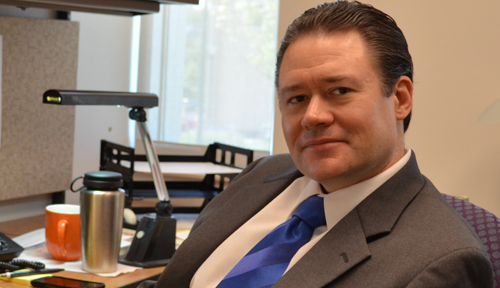A 2018 rural health care workforce report issued by UNMC reveals that while there has been an 11 percent increase in the number of physicians in the state over the last 10 years, there are 13 counties that still do not have a primary care physician.
Other key findings
- The number of registered nurses increased 61 percent in 10 years, from 17,335 to 27,922.
- There are now 1,148 nurse practitioners in Nebraska.
- The number of dentists per 100,000 population has decreased slightly from 57.1 to 56.5 over the last 10 years.
- There are nearly 400 more pharmacists and 1,200 more pharmacy technicians now compared to 2009.
- Nebraska currently has nearly 1,400 paramedics available — more than 70 percent more than 10 years ago.
- There are substantial gaps in the distribution of allied health professionals across Nebraska, particularly in north central Nebraska, which has virtually no occupational therapists, speech language pathologists or medical nutrition therapists.
This and other key findings of the study appear in the 64-page report, “The Status of the Healthcare Workforce in the State of Nebraska.”
“The health care workforce is an essential component in making Nebraska the healthiest state in the union and timely and accurate data such as this report will help inform initiatives and policies to help address those challenges,” said UNMC Chancellor Jeffrey P. Gold, M.D.
The study was commissioned and funded by the Nebraska Area Health Education Center Program (AHEC) and used the most recent data from the UNMC Health Professions Tracking Service and the state of Nebraska.
“This report helps to measure the progress we have made in the state in dealing with some of the workforce issues in rural Nebraska and in planning for the future,” said Mike Sitorius, M.D., professor and chair of family medicine in the UNMC College of Medicine.
“Some programs have helped increase the number of rural health professionals, but there still exist substantial recruiting challenges to bolstering the health workforce and access to health care in rural and underserved areas,” said Fernando Wilson, Ph.D., acting director of the UNMC Center for Health Policy and lead author of the report.
Recommendations
Based on the findings the following recommendations were made:
- Support existing pipeline programs and educational initiatives that incentivize health care professionals to practice in rural communities;
- Subsidize telecommunications and other infrastructure to support adoption of telehealth modes of delivering care to residents in rural areas;
- Maintain an annual report of the state’s health care workforce distribution; and
- Forecast population health needs and anticipated supply of health care professionals whenever updated data is available.
Among those challenges:
- The reality that nearly one-fifth of physicians in Nebraska are more than 60 years old, and thus likely to retire in the near future;
- 18 of 93 Nebraska counties have no pharmacist; and
- Demographics in many counties are becoming more diverse, but the current health workforce doesn’t necessarily reflect the populations being served.
“In partnership with stakeholders from Scottsbluff to Omaha, we’ve made progress over the years. But the landscape of health care is rapidly changing, and we must remain diligent to sustain the progress we’ve made and close the gaps,” Dr. Wilson said.
The last study of this kind was done in 2009 when UNMC released, “A Critical Match: Nebraska’s Health Workforce Planning Project.” At that time, the report was the most comprehensive review of the status of the health professions in the state that provided the groundwork for workforce planning efforts, Dr. Wilson said.

What about PA’s who play a critical role in providing quality healthcare to rural and urban communities across the state???
Congratulations to the whole team on this report!